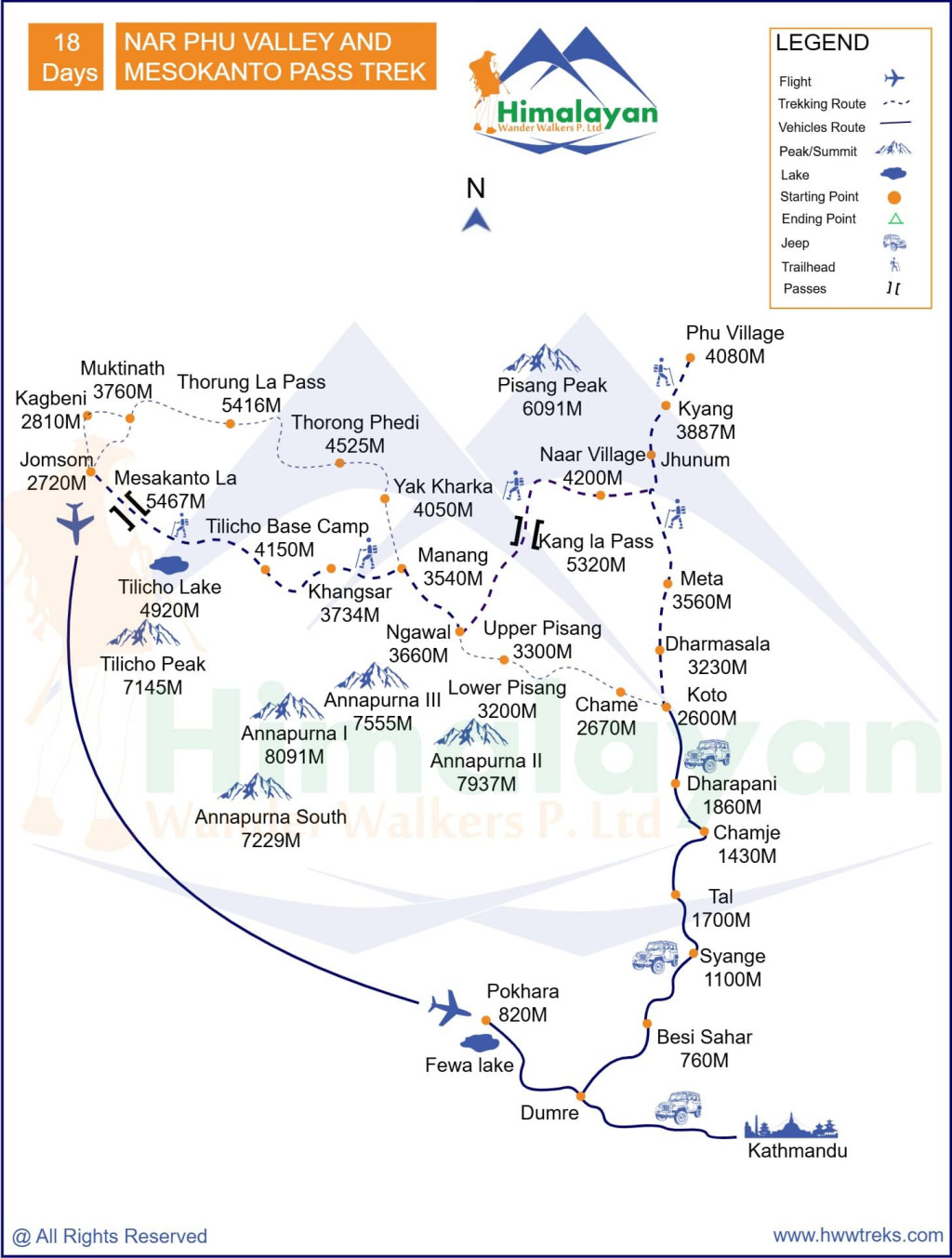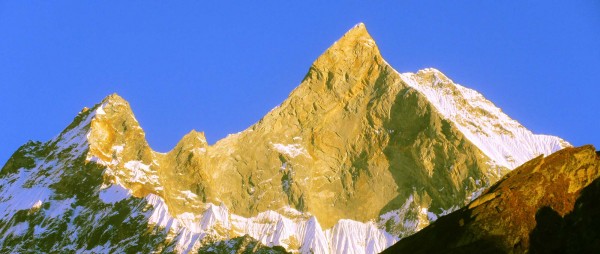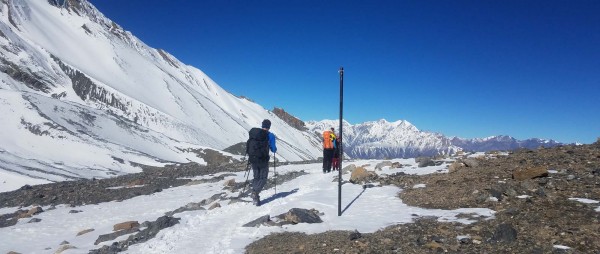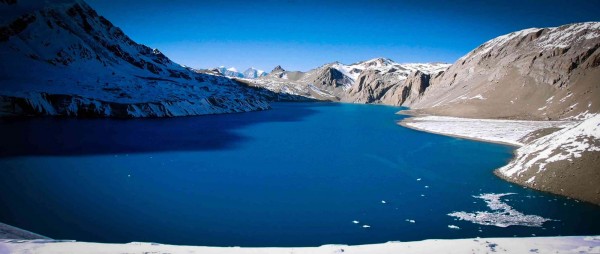Important Information
Region
Annapurna Region Treks
Duration
18 Days
Max Altitude 5340 meters
Best Season Spring/Summer/Autumn
Activity Per Day
5-6 hours walk
Grade
Level 4
Group Size
2 - 12 people
Transportation Bus/Jeep
“Explore the untouched valley of Nar Phu and trek through the challenging passes of the Mesokanto La (5340m), Kangla Pass (5320m), and Tilicho Lake (4920m).”
This Nar Phu and Mesokanto trekking is a combination of spectacular mountain scenery, picturesque lowland farms, and villages a wealth of cultural interest, and a challenging pass above 5000 meters which leads you to an amazing trip. This trek has covered the best of all from Annapurna with the altitude varying from 830 meters at the lowest land of Besi Sahar to the highest at Kang la pass with 5340 meters. This trekking trail connects two different districts; Manang and Mustang. Acclimatization is mandatory in this trekking because the trail leads above 5000 meters. This trekking is based on camping only. This trekking route is one of the pleasant adventures with the opportunities to explore green valleys and hills, culturally rich villages, flowery slopes, forests of Rhododendron, pasture lands, and river gorges. The trek is ideal for both natural explorers and adventure seekers.
Nar Phu Valley is untouched by modernization and of course, a less crowded trekking destination that lies on the northeast part of Thorang La, way to Saribung Pass which leads to Upper Mustang. This was a controlled area for foreigners until 2002 AD. This is a remote and exotic part of Annapurna where people of the Tibetan community live densely with the occupation of Yak herding and Agriculture. Century’s old Mani wall and colorful prayer flags will welcome to villages of Nar and Phu. Buddhist Monasteries are other attractions that help to heal your inner anxiety.
Tilicho Lake is the highest-altitude lake in the world situated at an elevation of 4,920 meters (16,138 feet) in the Manang district of Nepal. It is one of the most dramatic trekking destinations of the Annapurna Circuit trek. For this trek, it takes 3–4 days more to finish with the circuit trek. In the past, trekkers did camping treks but nowadays there are lodges available between Manang and the lake. Tilicho Basecamp is the last teahouse place to approach Tilicho Lake. Lake is surrounded by snow-capped peaks like Tilicho, Nilgiri, Khangsar, and Muktinath which reflect in the cold and clear turquoise waters that make it more beautiful.
Mesokanto Pass is a perfect viewpoint that offers a panoramic view of Mt. Tilicho Annapurna massif, Mt. Gangapurna, Mt. Fishtail, Glacier Dome, and hundreds of mountains and peaks. The adventure continues in the Annapurna region with magnificent views of the Annapurna massif and Dhaulagiri massif. This is an alternative pass of Thorang La which connects Mustang and Manang.
Himalayan Wander Walkers organize this camping trekking package, a true trekking adventure for all trekkers who are fit enough and have proper time. All our trips are tailor-made trips with personalized services.
If you are looking for a different itinerary than the itinerary here please Customize Your Trip
Highlights of Nar Phu and Mesokando Pass Trek
- Discover the hidden valley of Nar and Phu.
- Spectacular view from Kang-la and Mesokanto La Pass.
- Witness a Tibetan-derived culture with a unique landscape
- Explore the centuries-old stones of Mani Wall and Monasteries
- Experience the day hiking to Altitude Lake – Tilicho Lake.
Include
Airport pick up and drop off
Taxi/bus to the start and end of the trek
English-speaking government license holder trekking guide
Porter
Trekking guide’s and porter’s insurance during the trip
TIMS trekking permit
Annapurna Conservation Area permit
Special permit for Nar and Phu
Arrangement of emergency evacuation service (should have insurance for emergency evacuation and will be paid by your travel insurance company)
National park fee
Three nights in 3* Hotel in Kathmandu
Tea house Accommodation during the trek
Flight fare from Jomsom to Pokhara
Exclude
Meals & drinks during the trek and in Kathmandu (unless stated otherwise under ‘The trip cost includes’)
Personal trekking equipment
Travel/medical insurance
Emergency rescue evacuation
Phone calls
Internet
International air ticket
Tips for your trekking guide & porters at the end of the trek
If you’re forced to extend your trek due to bad weather or natural disaster circumstances, we are not liable to pay any compensation or otherwise be responsible for any expenses you may incur
Anything not mentioned in the ‘includes section’
Route Map

Important Information
CHECKLISTS FOR NAR PHU VALLEY AND MESOKANTO PASS TREK
- Valid passport (valid for six months from the date of your trip)
- MasterCard, Visa Credit, and Debit Cards are accepted in Nepal. However, some cash is highly recommended.
- Mobile (if your cell phone is from CINGULAR USA or ATNT (USA) operators, then your cell phone will work in Nepal.)
- Clothing (Layered clothes, windproof and waterproof jackets, fleece pullovers, thermal base layers, hiking pants, shorts, headwear, footwear, and other items according to your needs)
- Personal Items and Toiletries (First-Aid Kit, Iodine tablets or a UV purifier to treat water, Sun Protection)
- Travel and Health Insurance
- Trekking gear and equipment(if you have your own trekking gear and equipment, such as trekking poles, sleeping bag, and shoes, then you can bring them; else you can rent them in Thamel, Kathmandu). Read more for trekking gears and peak climbing gears.
Guiding, Food, and Lodging
In Nepal, all trekking supplies - Teahouse trekking means staying and eating in local lodges. We stay in single rooms where possible, but often you will have to share. Rooms are basic, normally just a bed with a pillow, blankets. A few have electric lights and all have a spacious dining room-lounge. We eat at teahouses and, although the food is usually plentiful and delicious, the menu is not extensive. They offer a variety of potatoes, rice and noodle dishes, as well as soup and seasonal vegetables. Beers and local spirits are often available, but that will be at your own cost. A variety of cereals, bread, and egg dishes are generally available for breakfast. There are also snacks available such as basic biscuits, chocolate, and soft drinks and in some areas, you will find fresh fruit in season. It is normal to meet your porter in the teahouse where you will stay overnight. So, pack your necessary things in your own day pack.
DRESS CODE FOR VISITING MONASTERIES, AND TEMPLES IN NEPAL
- Shirt (either half or full sleeve)
- Full pants/long skirts
- Any type of shoes with socks
- No Hats, No Umbrella, No Slippers, No t-shirts, No short skirt, and No half-pants
- Photographs allowed in the courtyard only.
Note regarding itineraries
Although we generally adhere to the schedule, the itinerary is subject to change for numerous reasons beyond our control, including weather and terrain conditions, suitable campsite availability, and the group's general fitness level. It is important to understand that our trek is logistically complex and it is not unusual that adjustments be made. Our guide will orient you each evening to the following day's plan; their good judgment is the key to the long history of successful treks that Himalayan Wander Walkers has led till now. Please remember that our ability to make adjustments as needed helps to ensure that your trek is successful.
Frequently Asked Question
Yes, the Nar Phu Valley and Mesokanto Pass trek can be customized based on your preferences. You can adjust the duration and level of difficulty and even detour to nearby places and monasteries if desired. Just let us know your preferences: “Customize Your Trip."
For the Nar Phu Valley and Mesokanto Pass trek, trekkers need the Annapurna Conservation Area Permit (ACAP) and a restricted area permit for Nar Phu Valley. These permits are mandatory to ensure safe and regulated trekking in the region.
Altitude sickness is a risk at high altitudes like the Mesokanto Pass (5,220m). It is recommended to take acclimatization days and hydrate well. Symptoms such as headaches, nausea, or dizziness should not be ignored, and descending to lower altitudes is essential.
Essential gear includes trekking boots, a sleeping bag, a down jacket, trekking poles, and layered clothing. Don’t forget a rain jacket, water bottles, and sunscreen. For higher elevations, ensure you have a warm hat and gloves for the cold nights. Read more about trekking gear.
Yes, the Nar Phu Valley and Mesokanto Pass trek can be redirected. You can choose alternative routes like the Annapurna Circuit (either through Thorang La Pass or through Tilicho Lake) or continue trekking to places such as Jomsom or Manang. Discuss the available options with your guide during the trek, or you can plan it.
No questions found matching your search. Try different keywords or browse all questions above.
| {{type.min}} - {{type.max}} Pax {{type.name}} - {{type.desc}} | {{type.display_price}} per people |
Extra prices:
Let us help you decide Inquiry
You might also like

- 11 days
- Annapurna Region Treks
Annapurna Base Camp
“The Annapurna Base Camp (ABC) trek is the most tranquil and the best scenic base camp trek in the Himalayan world.” Annapurna Base Camp is commonly known as ABC (4,130 m), but it is also called the Annapurna Sanctuary Trek (Annapurna Deuthali in Nepali). It is one of the most popular...



